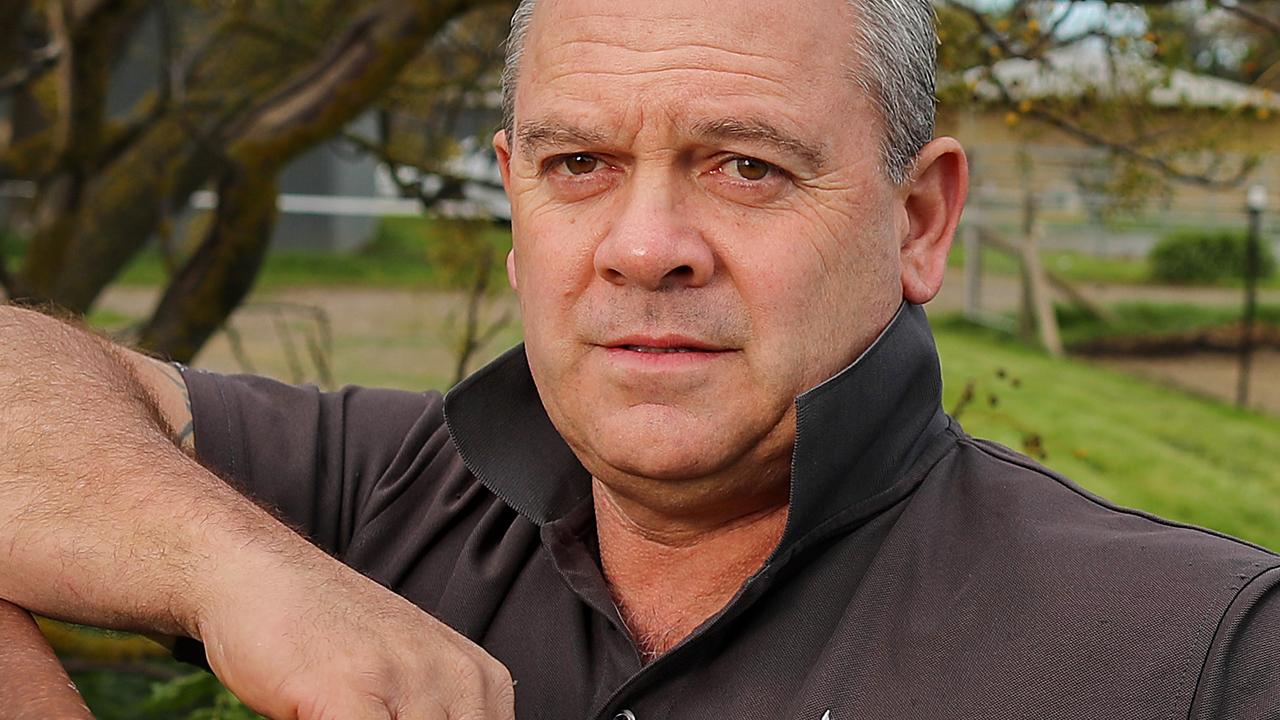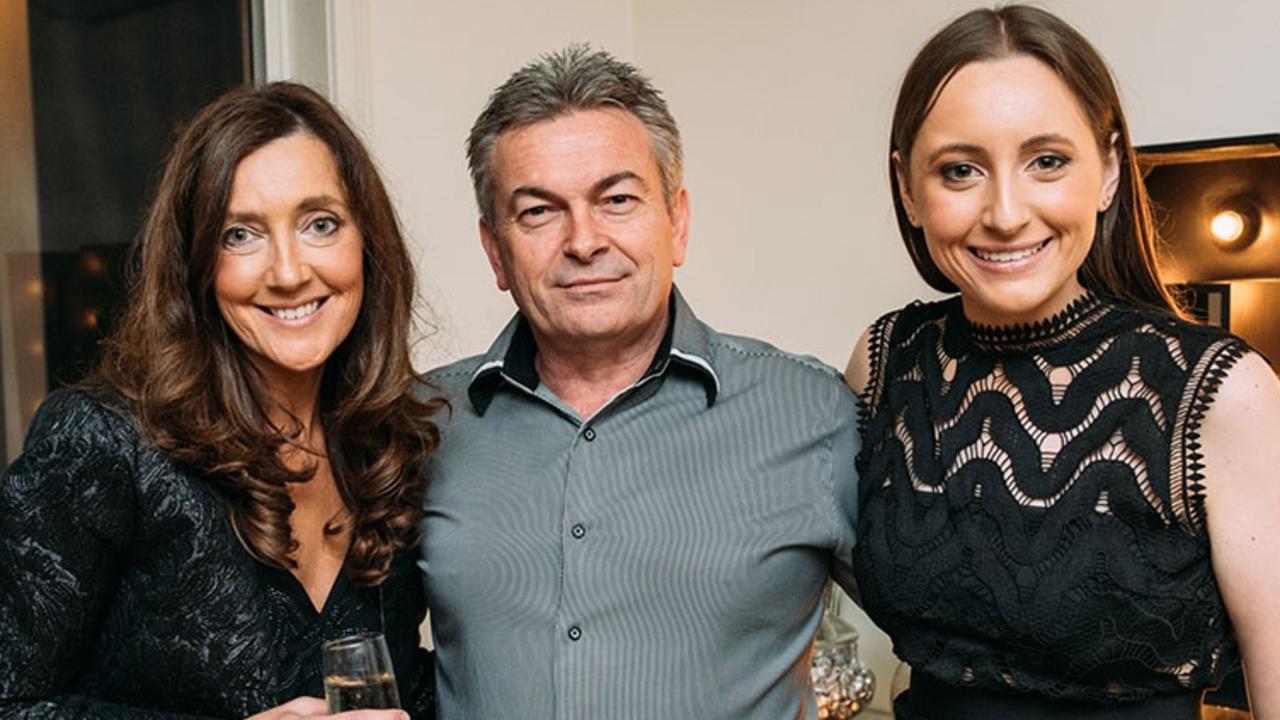Andrew Rule: Don’t take your heart for granted
Our crime writer Andrew Rule is lucky to be alive. He tells how he escaped the ticking time bomb in his chest and why a simple check-up can prevent more broken hearts.
Andrew Rule
Don't miss out on the headlines from Andrew Rule. Followed categories will be added to My News.
I’ll call him Ted to protect his family’s feelings in their time of grief. He and I didn’t know each other but we had things in common.
Not long turned 60. Often active, always busy. Fit enough in a mow-the-lawn, chop-the-wood, climb-the-ladder sort of way. Neither of us carrying much extra weight.
If Ted was anything like me, he’d have dodged jogging in favour of fast walks or slow bike rides to save bashing the knees. Either way, when each of us was going on holiday last spring, we both voted for walking trips.
We’re not talking Everest base camp here. Ted and his wife and daughter went to New Zealand. We went to Japan’s northern island, Hokkaido.
It was there, far from home, that it turned out we had something else in common, a secret our bodies had kept from us: faulty hearts.
I’d had minor warning signs, like breathlessness when running upstairs. It seems Ted hadn’t even had that. So it was a shock when he collapsed on a mountain too far from anywhere to be rescued quickly. His daughter worked on him for half an hour, trying heroically to keep his heart beating.
If he had been home mowing the lawn, an ambulance would have reached hospital in time. But he wasn’t.

And so a happy holiday with the people he loved most turned in a few terrible minutes into the death of an apparently healthy man. That is how dodgy hearts cause broken hearts.
Barring luck, I could have come home in a coffin, too.
The first serious sign things weren’t good came on a steep hill in Japan. Walking on the flat had been fine. Uphill was terrible.
Everyone else in the group — and not all were natural athletes — was trekking up slopes no problem. Chubby ones, older ones, one nursing a recent foot operation: all chatting and taking in the view and wondering what’s for dinner.
Meanwhile, I’m dragging one foot after the other, legs feeling like lead, and fighting for breath. First you’re annoyed. Then embarrassed. Then you realise it’s serious.
Back in Melbourne, I call a cardiologist. Next day I’m in his rooms with electro patches and wires stuck to my chest, a poker-faced technician scanning the screen.
After a while she becomes more animated and fetches the specialist to look at my first-ever electrocardiogram, otherwise known as an ECG.

The specialist takes me into his office like a headmaster about to give a bad kid the strap. “So, how long have you had the heart murmur?” he growls. He knew the answer: I have no bloody idea.
I had never been at all curious about my ticker: GPs would take my blood pressure, which was reliably normal, but I doubt a stethoscope had been on my chest in a decade. For all I knew, an ECG was a cricket ground, possibly in Essendon.
I get on the cardiologist’s treadmill but not for long. After a minute he orders me off. My pulse is galloping harder than Winx — but not nearly as evenly. Verdict: dodgy heart valve. Bad plumbing, not bad food. Probably inherited. Thanks for nothing, ancestors.
A second cardiologist, Dr Martin Hiscock at the Epworth in Richmond, produces a second opinion as blunt as the first: yep, the murmur is a leaking mitral valve, all right.
“Here,” he says, handing me his stethoscope to eavesdrop on my suddenly treacherous ticker. “Hear that ‘swish slurp’ sound with every beat? That’s what a leaky valve sounds like.”
He doesn’t need to add that in the past few years, maybe someone might have noticed the “swish slurp” if I’d bothered insisting on a check-up. But why would I have insisted? For a long time, doctors had mostly tolerated my casual assumption that
I was bulletproof, that there was nothing to see here.
Except that there was something to see, after all. I might have looked all right. But inside was a time bomb with a slow-burning fuse that had finally got too short.

First they tried drugs. We had a quiet Christmas but apparently not quiet enough: on Boxing Day the rogue ticker broke out, beating fast and erratically. Walk 50 metres briskly and you’d actually see my shirt pocket jumping as if there was a crazed frog in it, kicking madly at 130 beats a minute. It’s called arrhythmia and it kills people.
The drugs didn’t work. But the surgeon, Aubrey Almeida, did. On the last day of summer, he used a robotic device to perform heart surgery by the minimalist method: entering sideways through the ribs rather than “unzipping” the chest right down the middle in the classic (and highly effective) way.
It’s not quite keyhole surgery: they punch through the ribs and collapse one lung to get a sideways shot at the heart.
In theory, you’re unconscious for the few hours it takes to do the surgery. In reality, I recall nothing from midday until maybe 11pm, when I open my eyes to see my son looking at me with relief: mostly because he can now go home.
A week later I get out of hospital in time to attend a dear friend’s funeral. But it isn’t over. Again, my pulse stampedes at 130 for no good reason, the crazy frog kicking away in my shirt.
The valve repair is as good as human skill and a robotic arm can make it. Not only did the surgeon mend the floppy valve, he sewed up
a small hole in my heart.
So, the plumbing is excellent but the electrics are erratic. Anyone who has renovated an old house will understand perfectly.
Enter Professor Jon Kalman of the Melbourne Heart Centre at Royal Melbourne Hospital. He is an electrophysiologist, which is a bit like calling World War II an international incident. His dedication to his vocation is remarked on even in a field where high achievement is the norm.

Kalman has made it his life’s work to understand the subtle electric impulses that govern how hearts beat, something like the way a conductor knows the instruments in a symphony orchestra.
If you talk to people whose lives he has saved or greatly improved, that’s the way they describe him, as a sort of maestro.
He was a pioneer of a technique called catheter ablation
in the 1990s. This is the cardiac equivalent of putting a satellite in orbit: the first one was a massive breakthrough and now everyone’s doing it.
One reason ablation has taken off in Australia, saving many lives, is that the professor teaches a handful of people as he fixes hundreds of others.
He did my ablation in April — perhaps the 2000th his “lab” has done since the first in 1997. Four months later, touch wood, I’m all fixed up. The scars have faded. I haven’t had a drink of the alcoholic variety since Christmas Day, in case
it “insults” what’s described as a stretched heart muscle.
You’d think that’s the end of the story of two men who went on holiday last spring, with only one coming home. But there’s an obligation to use the experience to benefit others.
The late Ted had hardly darkened a doctor’s door in decades, which was fine right up until it wasn’t.
This reporter was a slightly more regular patient but never gave the heart a second thought. I’d always feared lung damage more because of some jobs I’d had, but took the ticker for granted.

The idea here is not to “plug” any particular professional medico — they hate that — but to stop people making the same mistake Ted and I made. A mistake committed by countless thousands of Australians.
Take an MCG jammed full of sports fans then multiply by six. That’s how many Australians — about 500,000 of us — are affected by the most common heart arrhythmia, the thing called atrial fibrillation.
These people are five times more likely to suffer a stroke — and a stroke is catastrophic. One in five stroke victims die in a month, and survivors often suffer physical and mental effects that blight their lives.
Chances of stroke increase with age. But that doesn’t mean that heart trouble doesn’t affect the young. My grandson, not yet four, was diagnosed with a heart condition at birth that means he eventually faces another operation to add to the scars he already has.
Most of us, in fact, have reason to back the fight against the scourge this newspaper and the Heart Foundation tackled earlier this year with the “Silent Killer” campaign against heart diseases that claim 51 Australian lives every day.
Tanya Hall has spent her life coping with the heart she drew in the genetic lottery. She was born with a serious hole it, had her first operation at nine and, in her 20s, “ended up in emergency every week” with the arrhythmia that haunted her.
Tanya is now in her early 40s. After three ablations and a pacemaker, her ordeal is ongoing. But she decided to help others, using her business development skills to set up the Hearts4Heart charity, which (like the Heart Foundation and Stroke Foundation) has become an advocate for the many whose lives are affected by heart disease. Her friend Tracy Busse, a survivor of sudden cardiac arrest, is a director of Hearts4Heart.
Tanya says: “People say ‘You look all right’ but the thing is, you don’t have to look like a heart attack victim to be one.”
The last time she saw her father, Craig, in Perth in early 2012, he looked fine. A few months later, Tanya’s brother (who still lives in Perth) was worried because their father wasn’t answering his phone. He went to the house, got through a window and found the body. Craig Hall had an underlying heart condition no one knew about. He was only 56.
Like too many men, he went to doctors rarely and when he did, he didn’t get his heart checked. It makes no sense: we are so casual about the tiny pump that gives us life, yet we have known its importance for all
of human history.
Language is full of references to the heart. In English alone we speak of people being lion-hearted, faint-hearted, half-hearted, black-hearted, big-hearted and broken-hearted. We speak of heartache and being heartsick.

It feels better to be big-hearted than not. People with the means to be philanthropic can donate to build the Royal Melbourne Hospital’s new Heart Rhythm Centre, which needs the last $987,000 to start the $8 million project next year.
The rest of us can buy tickets in the hospital’s big raffle: first prize, a brand new house in Brighton. If I buy a book of tickets I reckon we’re a chance.
For those of us who owe our health to medical skill, to the Hiscocks, Almeidas and Kalmans,
it’s a matter of heartfelt thanks.
The heart of the thing is this: every time we invest in a new hospital facility like the Heart Rhythm Centre, it will save lives.
One of them could be yours. Or someone you love.
To donate to the Heart Rhythm Centre, transfer funds to Melbourne Health, BSB: 083170, A/C 120711157 or send cheques made payable to the Royal Melbourne Hospital Foundation at 300 Grattan St, Parkville, 3050.



